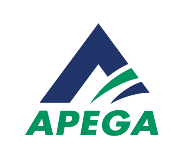Do You Need a Licensed Professional or a Technologist?

The work of engineering and geoscience is vast. It can range from collecting data to determining if the ground is safe to build on. Some of this work can be done by technologists and technicians; some must be done by licensed professionals. As a project manager, it can be challenging to know which you need, yet it’s critical that you do.
What’s the Difference?
Although licensed professionals and technologists both perform work within the practice of engineering or geoscience, technologists can’t do the work of licensed professionals. The difference is licensed professionals work independently and take responsibility for their work, whereas technologists must work under the supervision of a licensed professional.
What’s in a Name?
Licensed professionals
Due to their advanced education and extensive experience, licensed professionals can work independently. They can solve complex problems using complex methodologies, and they have the legal right and requirement to take responsibility for their work.
Professional engineers and geoscientists are licensed to practise within the full scope of practice as defined in the Engineering and Geoscience Professions Act with no limitations.
Professional licensees are licensed to practise within a restricted scope of practice within engineering or geoscience.
Professional technologists are licensed to practise within a restricted scope within engineering or geoscience that is further limited to routine application of industry-recognized codes, standards, procedures, and practices using established engineering or applied-science principles and methods of problem solving.
Certified Engineering Technologists and Certified Technicians
Certified engineering technologists (C.E.T.s) and certified technicians (C.Tech.s) are key parts of engineering and geoscience teams—an integrated team that operates within a single spectrum of practice. C.E.T.s and C.Tech.s must work under the supervision of a licensed professional who will verify the quality and results of the work and take responsibility for it. They typically work within the routine application of engineering and geoscience procedures and practices.
In addition, technologists and technicians have no defined scope of practice. By law, their work must be assigned, supervised, and approved by a licensed professional.

Note: ASET stands for the Association of Science and Engineering Technology Professionals of Alberta.
Which Work is Being Done?
You may not always need a licensed professional. It will depend on the work being done. For example, sampling, measurement, visual inspection, repair of equipment, and operation of equipment may not need a licensed professional. You can check with a licensed professional to assist you in understanding the work being done.
Where to Learn More
Visit www.apega.ca/government to learn more.
To check if someone is a professional engineer, geoscientist, or licensee, visit our member directory. You can also see the scopes of practice for professional licensees.
If you’re still not sure which professional your project should use, contact [email protected]. We’re here to help.
